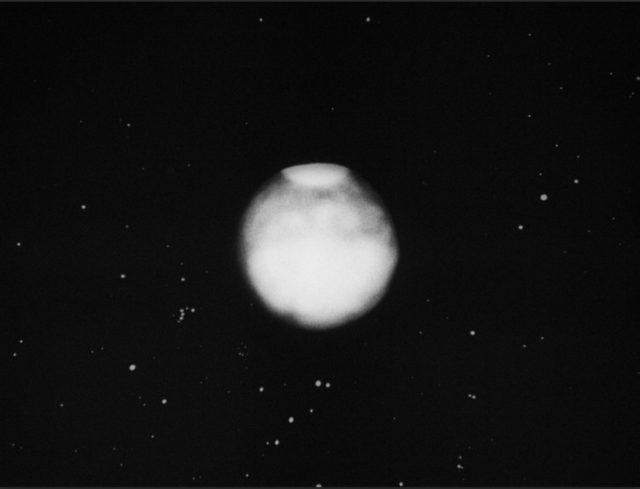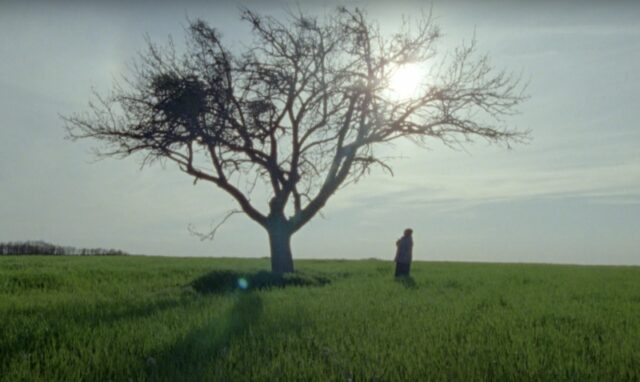
Kuba Mikurda’s Solaris mon amour explores inner and outer space using found footage
SOLARIS MON AMOUR (Kuba Mikurda, 2023) / HANDFUL OF DIRT (GARSTKA ZIEMI) (Izabela Zubrycka, 2023)
Museum of the Moving Image
35th Ave. at 36th St., Astoria
Friday, March 15, $15, 6:30
Series runs March 13-17, individual screenings $15, Weekend Pass $60, All-Festival Pass $120
718-777-6800
www.movingimage.us
Despite its tantalizing title, Kuba Mikurda’s Solaris Mon Amour is not an experimental film lover’s fantasy mashup of Andrei Tarkovsky’s Solaris and Alain Resnais’s Hiroshima mon amour. Instead, it’s a fascinating journey into grief and trauma, dreams and memory, using found scientific footage to create a compelling and haunting cinematic experience.
Mikurda goes back to Stanisław Lem’s novel Solaris, which the Polish writer and philosopher began writing in 1959, the year that Hiroshima mon amour was released. The latter is about an actress and an architect who have a torrid affair in one of the two cities that the United States dropped the atomic bomb on in 1945; the former imagines a planet where an astronaut encounters what appears to be his dead wife, among other strange things.
Mikurda and editor Laura Pawela piece together their forty-seven-minute black-and-white story out of excerpts from more than seventy films in the WFO archives at the Educational Film Studio in Lodz made between 1952 and 1982, including Earth Our Planet, Life of the Stars, Radiographic Study of Metals, The World of Mold, Injections, Jellyfish, Plasma Torch, ABC of Cosmonautics, and She Put Down Foots Filled the Ground, accompanied by Marcin Lenarczyk’s sci-fi soundtrack. The images range from the sun, moon, and stars to technical equipment, brain tissue, blood molecules, microorganisms, astronaut training, flames, random numbers, and extreme close-ups of unidentified people, along with audio clips from Jozef Grotowski’s 1962 and 1970 radio adaptations of Solaris.
“It was the first and only totally incomprehensible case in my life,” Kris Kelvin says. “I’m flying to Solaris because I think this is about ourselves, about the limits of human cognition.”
The director was inspired by Agnieszka Gajewska’s books Holocaust and the Stars: The Past in the Prose of Stanisław Lem and Stanislaw Lem: Exiled from the High Castle, in addition to such films as Chris Marker’s La Jetée, Guy Maddin’s The Green Fog, and György Palfi’s Final Cut: Ladies and Gentlemen; it also made me think of Bill Morrison’s Decasia, with its decaying film stock.
Solaris Mon Amour opens with a shot of a camera lens facing slightly off center, tracking a man checking the grassy ground in a field and digging into the earth. “How exhausting. Need to wake up,” a voiceover says. Mikurda then cuts to a view of the universe and, later, microscopic images, equating the camera and the microscope, two instruments humans employ to learn more about the world and our place in the universe. Mikurda (Love Express: The Disappearance of Walerian Borowczyk, Escape to the Silver Globe) crafts it all into a hypnotic audiovisual mystery that will keep echoing in your mind long after it’s over.

Izabela Zubrycka’s Handful of Dirt follows a rural Polish funeral singer and her gravedigger son
Solaris Mon Amour is being shown March 15 at 6:30 as part of the Museum of the Moving Image’s thirteenth annual First Look festival, running March 13–17, comprising more than two dozen events, from North American film premieres to screenplay readings, workshops, and an art reception. Mikurda’s film will be preceded by Izabela Zubrycka’s student documentary Handful of Dirt (Garstka Ziemi), which also explores such themes as grief and loss. Zubrycka focuses on Halina Waszkiewicz, one of the last funeral singers in Podlasie, Poland, and her son, gravedigger Andrzej Wójcik. The thirteen-minute short echoes Solaris Mon Amour in its own way, with shots of the sun, sky, and moon, Wójcik digging into the earth, moments of silence, extreme close-ups, and talk of time, dreams, sleep, and death.
Writer-director Zubrycka, cinematographer Stefan Żółtowski, editor Anna Adamowicz, and sound recordist Maciej Tobera follow Andrzej as he prepares the graves and Halina joins a group of singers in black who will help the deceased cross over through song. “I wasn’t afraid and I’m not afraid of the dead,” Halina says. “What is death?”
Mikurda and Zubrycka will be at the screening at MoMI’s Redstone Theater to discuss their work. First Look kicks off March 13 with Astrid Rondero and Fernanda Valadez’s Sujo and Charlie Shackleton’s short Lateral and continues with such films as Mariam Chachia and Nik Voigt’s Magic Mountain, Robert Kolodny’s The Featherweight, and Lois Patiño’s Samsara.
[Mark Rifkin is a Brooklyn-born, Manhattan-based writer and editor; you can follow him on Substack here.]